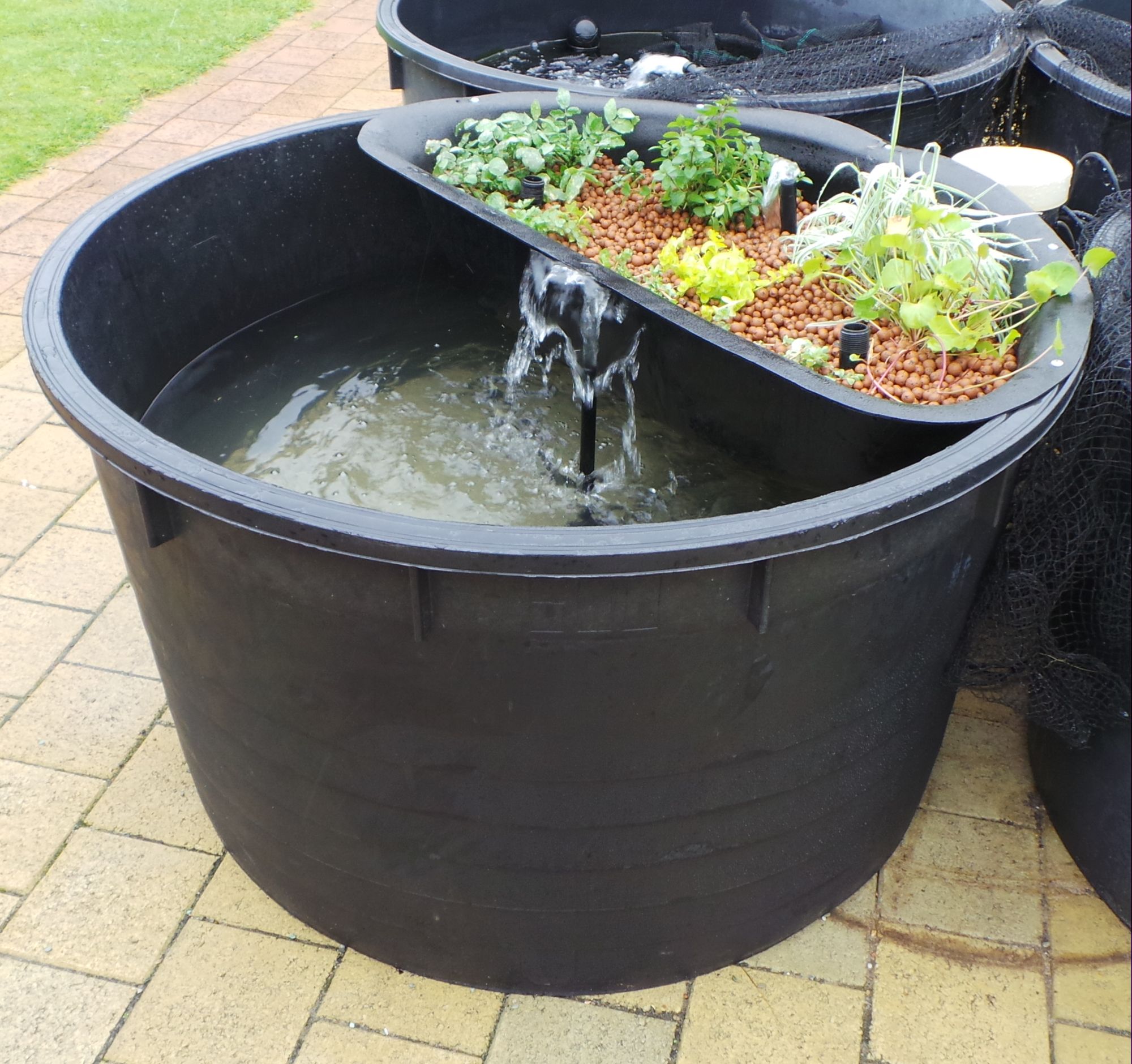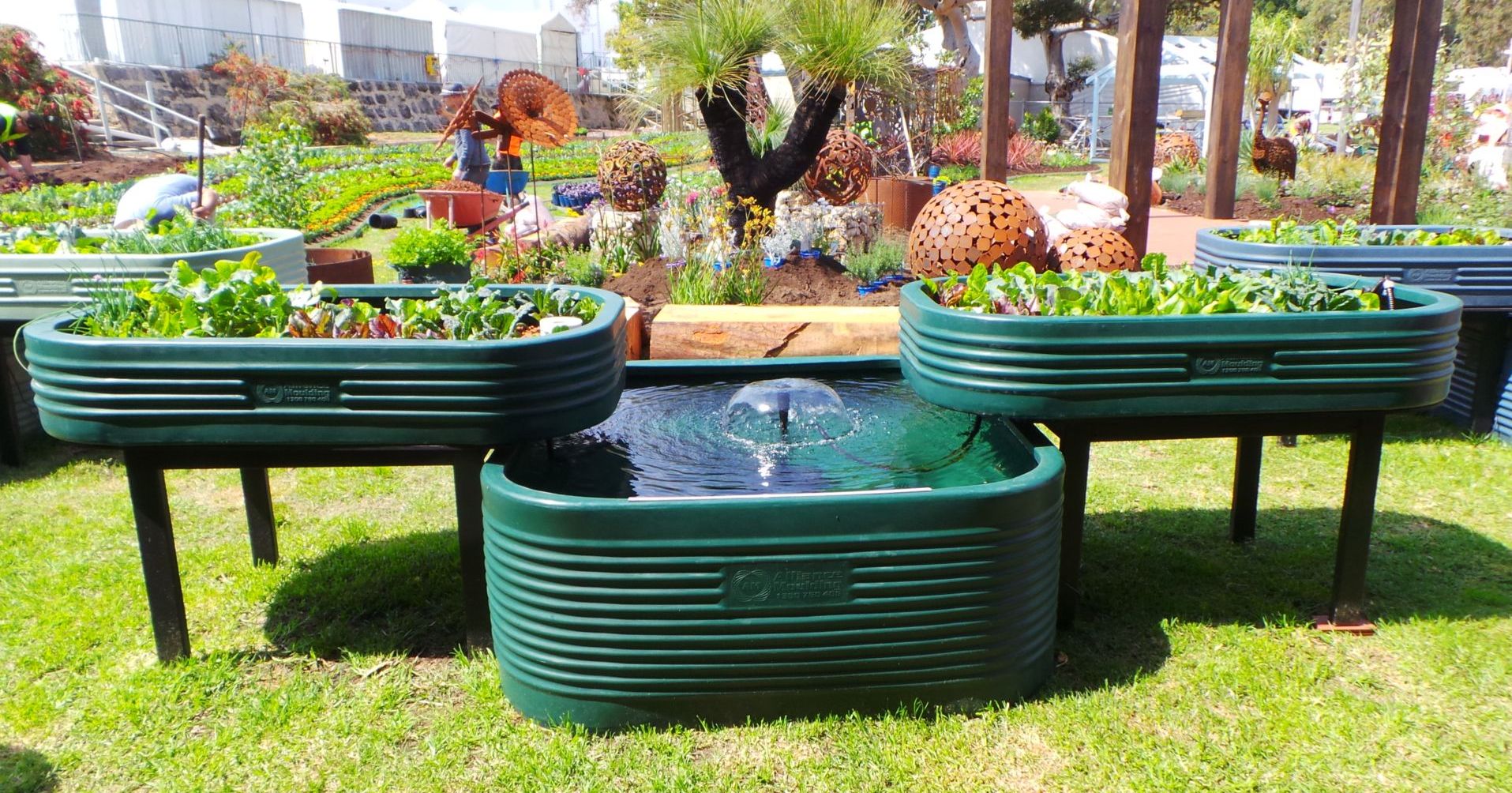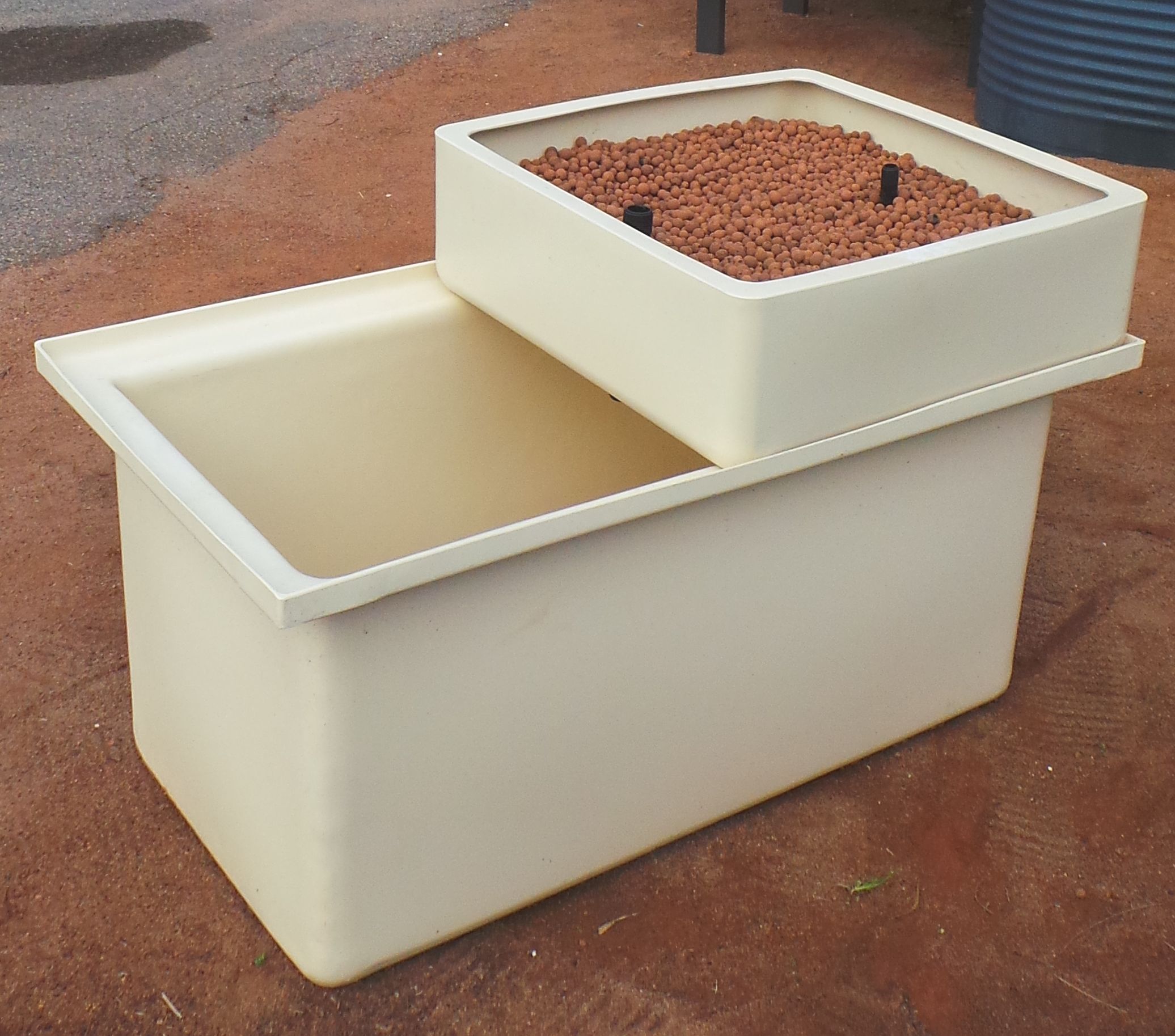Introducing the small aquaponics kit, an innovative system that combines aquaculture and hydroponics to create a sustainable and space-efficient solution for food production. Dive into this comprehensive guide to explore its benefits, components, and the practicalities of setting up and maintaining your own small aquaponics kit.
Discover how this ingenious system harnesses the natural processes of fish farming and plant cultivation, allowing you to grow fresh, organic produce in the comfort of your own home or educational institution.
Introduction

Aquaponics is a sustainable food production system that combines aquaculture (fish farming) with hydroponics (plant cultivation in water). It offers several benefits, including:
- Increased food production in limited spaces.
- Efficient use of water and nutrients.
- Reduced environmental impact compared to traditional farming.
A small aquaponics kit is a scaled-down version of a larger aquaponics system, designed for individuals or families to grow their own food in a small space. These kits typically include a fish tank, a grow bed for plants, a pump, and a filter.
Benefits of Small Aquaponics Kits
- Provides fresh, organic produce.
- Teaches children about sustainable food production.
- Reduces household expenses on food.
- Improves indoor air quality by removing carbon dioxide and releasing oxygen.
Components of a Small Aquaponics Kit

A small aquaponics kit is a system that combines fish farming with plant cultivation. It consists of several essential components that work together to create a self-sustaining ecosystem.
The main components of a small aquaponics kit include:
Fish Tank
- The fish tank is where the fish are housed. It should be large enough to provide the fish with adequate space to swim and grow, and it should be equipped with a filter to keep the water clean.
Grow Bed
- The grow bed is where the plants are grown. It can be made from a variety of materials, such as plastic, wood, or metal, and it should be filled with a growing medium that provides support and nutrients for the plants.
Pump
- The pump circulates the water between the fish tank and the grow bed. It should be strong enough to provide adequate water flow to both the fish and the plants.
Filter
- The filter removes waste from the water. It can be a mechanical filter, a biological filter, or a combination of both. A mechanical filter removes solid waste, while a biological filter removes dissolved waste.
These components work together to create a self-sustaining ecosystem. The fish provide nutrients for the plants, and the plants help to clean the water for the fish.
Benefits of Using a Small Aquaponics Kit
Small aquaponics kits offer several advantages, making them an attractive option for those interested in sustainable food production.
One of the key benefits is space efficiency. These kits are designed to fit into small spaces, such as apartments, balconies, or patios. This makes them suitable for urban environments or homes with limited outdoor space.
Another advantage is water conservation. Aquaponics systems recycle water, significantly reducing water usage compared to traditional gardening methods. This is particularly beneficial in areas with water scarcity or during periods of drought.
Nutrient recycling
Small aquaponics kits also facilitate nutrient recycling. The fish waste provides essential nutrients for the plants, which are then filtered and returned to the fish tank. This closed-loop system eliminates the need for chemical fertilizers and reduces waste.
Educational value, Small aquaponics kit
Finally, small aquaponics kits have significant educational value. They provide a hands-on opportunity to learn about the principles of aquaculture and hydroponics. This can be particularly beneficial for children and students interested in science, biology, or environmental sustainability.
Starting with a small aquaponics kit is a great way to learn about this sustainable food production system. To get started, you’ll need to understand the basics of how to aquaponics system works. This involves creating a closed-loop ecosystem where fish waste provides nutrients for plants, and the plants in turn filter the water for the fish.
You can find detailed instructions on how to aquaponics system online, but once you’ve got the basics down, you can start experimenting with different plant and fish combinations in your small aquaponics kit.
Considerations for Choosing a Small Aquaponics Kit

When selecting a small aquaponics kit, it’s crucial to consider several key factors to ensure an effective and enjoyable experience. These factors include:
Size and Capacity
- Determine the available space for your kit and the number of plants and fish you plan to grow.
- Consider the size of the grow bed and the capacity of the fish tank to ensure sufficient space for both components.
Fish Species
- Choose fish species suitable for aquaponics, such as tilapia, goldfish, or catfish.
- Research the specific needs of each fish species, including their diet, water quality requirements, and compatibility with other fish.
Plant Selection
- Select plants that are compatible with the fish species and thrive in the aquaponics environment.
- Consider the size, growth rate, and nutrient requirements of different plants.
Budget
- Determine the budget for your aquaponics kit, including the cost of the kit itself, fish, plants, and any necessary equipment.
- Compare prices from different suppliers and consider the long-term maintenance costs of the system.
Setting Up and Maintaining a Small Aquaponics Kit
Setting up and maintaining a small aquaponics kit is relatively simple and can be a rewarding experience. By following these steps, you can ensure that your system is functioning properly and providing optimal conditions for both your fish and plants.
Assembling the Components
- Unpack all of the components of your kit and lay them out on a flat surface.
- Follow the instructions provided to assemble the grow bed, fish tank, and any other necessary components.
- Once the components are assembled, connect them together using the provided tubing and fittings.
Cycling the System
Before adding fish or plants to your system, it is important to cycle it. This process helps to establish beneficial bacteria that will break down fish waste and convert it into nutrients for the plants.
- Fill the fish tank with water and add a source of ammonia, such as fish food or pure ammonia.
- Run the system for several weeks, monitoring the ammonia, nitrite, and nitrate levels regularly.
- Once the ammonia and nitrite levels have dropped to zero and the nitrate level has stabilized, your system is cycled and ready for fish and plants.
Stocking the Fish
The type and number of fish you stock in your system will depend on the size of your tank and the type of plants you are growing.
- Choose fish that are compatible with each other and with the plants in your system.
- Start with a small number of fish and gradually add more as your system matures.
- Feed your fish a high-quality diet and monitor their health regularly.
Planting the Plants
The type of plants you grow in your system will depend on the size of your grow bed and the climate in your area.
- Choose plants that are compatible with each other and with the fish in your system.
- Start with a small number of plants and gradually add more as your system matures.
- Fertilize your plants regularly and monitor their health regularly.
Monitoring and Adjusting Water Parameters
It is important to monitor the water parameters in your system regularly to ensure that they are within the optimal range for your fish and plants.
- Test the water for pH, ammonia, nitrite, nitrate, and dissolved oxygen regularly.
- Make adjustments to the water parameters as needed, such as adding pH buffers or performing water changes.
- Keep a log of your water test results so that you can track the health of your system over time.
Troubleshooting Common Issues
Aquaponics systems are generally reliable, but even the best systems can experience occasional issues. The most common problems and their solutions are discussed below.
It’s important to monitor your system regularly and address any problems promptly. This will help to keep your system running smoothly and ensure the health of your plants and fish.
Water Quality Issues
- Problem:Water is cloudy or discoloured.
- Solution:This is usually caused by a bacterial bloom. Add a few drops of chlorine bleach to the water (1 drop per 10 gallons) and run the system for 24 hours. Then, change the water and add beneficial bacteria to help keep the water clear.
- Problem:Water has a foul odor.
- Solution:This is usually caused by a build-up of organic matter. Clean the system thoroughly and change the water. You may also need to add more plants to the system to help absorb excess nutrients.
- Problem:Water pH is too high or too low.
- Solution:Add pH up or pH down to the water to adjust the pH to the desired level.
Fish Health Problems
- Problem:Fish are lethargic or not eating.
- Solution:This is usually caused by poor water quality. Check the water quality and make sure that the pH, temperature, and ammonia levels are within the acceptable range. You may also need to add more oxygen to the water.
- Problem:Fish have white spots or ulcers.
- Solution:This is usually caused by a bacterial or fungal infection. Treat the fish with an appropriate medication.
- Problem:Fish are dying.
- Solution:This can be caused by a variety of factors, including poor water quality, disease, or poisoning. Check the water quality and make sure that the pH, temperature, and ammonia levels are within the acceptable range. You may also need to add more oxygen to the water.
If you suspect that your fish are sick, treat them with an appropriate medication.
Plant Growth Issues
- Problem:Plants are not growing well.
- Solution:This is usually caused by a lack of nutrients. Add more fish food to the system or add a liquid fertilizer to the water.
- Problem:Plants have yellow leaves.
- Solution:This is usually caused by a lack of iron. Add iron chelate to the water.
- Problem:Plants have brown or black spots.
- Solution:This is usually caused by a fungal infection. Treat the plants with an appropriate fungicide.
Examples of Small Aquaponics Kits
Small aquaponics kits are available in a variety of designs and sizes to suit different needs and spaces. Some popular options include:
The choice of kit will depend on factors such as the amount of space available, the desired plant and fish species, and the budget.
Backyard Aquaponics System
Backyard aquaponics systems are larger than tabletop systems and are typically designed for outdoor use. They can be installed in a backyard, on a patio, or on a rooftop.
Backyard aquaponics systems typically include a fish tank, a grow bed, a pump, and a filter. The fish tank is where the fish are raised. The grow bed is where the plants are grown. The pump circulates the water between the fish tank and the grow bed.
The filter removes waste from the water.
Backyard aquaponics systems can be used to grow a variety of plants, including vegetables, fruits, and herbs. They can also be used to raise fish, such as tilapia, catfish, and bass.
- Benefits of backyard aquaponics systems:
- They are a great way to grow your own food.
- They are a sustainable way to raise fish and grow plants.
- They can be a fun and educational experience for the whole family.
Considerations for backyard aquaponics systems:
- They require more space than tabletop systems.
- They can be more expensive than tabletop systems.
- They require more maintenance than tabletop systems.
Conclusion
Small aquaponics kits offer a sustainable and rewarding way to produce fresh, healthy food. They combine the benefits of aquaculture and hydroponics, creating a closed-loop ecosystem that maximizes resource utilization. By incorporating these kits into your home or educational setting, you can experience the joy of growing your own food while promoting environmental responsibility.
We encourage you to explore the advantages of small aquaponics kits and consider using them to enhance your food production efforts. With proper planning and maintenance, these systems can provide a reliable source of nutrient-rich produce for years to come.
Ultimate Conclusion
In conclusion, small aquaponics kits offer a myriad of advantages for sustainable food production. By embracing this innovative technology, you not only cultivate nutritious and fresh produce but also contribute to environmental conservation and educational enrichment. Whether you’re a seasoned gardener, a curious learner, or simply seeking a sustainable solution for food security, a small aquaponics kit empowers you to make a positive impact while enjoying the fruits of your labor.
Quick FAQs: Small Aquaponics Kit
What are the space requirements for a small aquaponics kit?
Small aquaponics kits are designed to be compact and space-efficient. They can typically fit in small apartments, balconies, or even classrooms, making them suitable for urban environments or educational settings.
How much time is required to maintain a small aquaponics kit?
Maintenance for a small aquaponics kit typically takes around 15-30 minutes per week. This includes tasks like feeding the fish, checking water parameters, and pruning plants.
Can I grow any type of plant in a small aquaponics kit?
While most leafy greens and herbs thrive in aquaponics systems, some plants are better suited than others. Good choices for beginners include lettuce, basil, mint, and strawberries.
